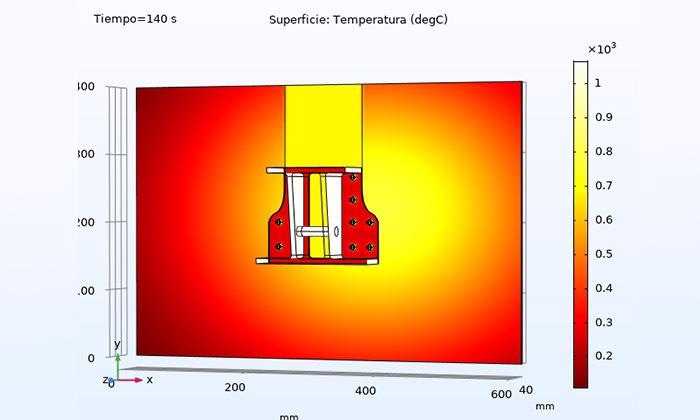Reviewed by Alex SmithApr 7 2022
The HITCOMP (High-Temperature Characterization and Modeling of Thermoplastic Composites) project within the Horizon 2020 program has been coordinated by the Universidad Carlos III de Madrid (UC3M). It aims to study the possible benefits of thermoplastic materials in the aerospace industry.

Image Credit: Universidad Carlos III de Madrid.
Normally, the European aerospace sector utilizes low-weight and high-performance thermosetting plastic composites—also called epoxy resin-based composites—in various applications.
But comparatively, these materials are not as heat resistant as other metal aircraft components, which can sacrifice safety in situations where extreme temperatures have been attained.
An alternative has been suggested by the HITCOMP research team: the use of new PAEK resins-based thermoplastic materials. This was done by taking measures to enhance the present thermosetting composites’ behavior despite heat damage.
While the HITCOMP project was under development, components made from a thermoplastic base have been proven to be highly efficient, from the viewpoint of their thermal properties, compared to thermosetting composites.
A familiar property that makes them highly beneficial is that they can be reshaped, recast, processed and recycled lacking any extra curing process to stiffen and set.
They are also affordable, more adaptable and eco-friendly materials compared to traditional thermosetting composites and have a longer service life, as a result of their high resilience—it is possible to recycle or repair more easily—and fatigue resistance—wear and tear—and corrosion.
The initiation of these materials would imply having safer and lighter aircraft which use less fuel, thereby enhancing energy efficiency and decreasing their emissions.
To get the utmost benefits from thermoplastics in the aerospace industry, as a result of their capacity to melt and deform when subjected to overheating, it is essential to identify their behavior when exposed to fire, heat and mechanical loads.
The HITCOMP project has come up with a test laboratory along with new infrared (IR) thermography methods to achieve precise and non-intrusive measurements of the actual temperature of materials at the time of fire tests. The last target is to perform virtual tests on thermoplastics and make a comparison of their performance in real applications with those of traditional thermosetting composites.
The aerospace sector is undergoing a transition to a more electric aircraft. This involves more heat and eventually fire sources, increasing the heating effect on the structure.
Fernando López, Study Lead Researcher, Department of Physics, Universidad Carlos III de Madrid
López who is also the coordinator of the HITCOMP project stated, “In this context, our project aims to establish an innovative methodology which allows a characterization of thermoplastics that involves fewer resources and improves the prediction of their behavior and resistance when subjected to mechanical loads or fire and high temperatures.
The measurements achieved by infrared thermography enable computer simulations to be performed, which virtualize testing to choose this kind of material in the aeronautical industry.
The implementation is anticipated to “significantly reduce the number of validation tests, which are mandatory and greatly increase the cost and delay the approval of this type of material in the industry.”
Already, the IR models and equipment have been transferred to the Airbus company so that its industrial application could be studied.
The research group also came up with a new technique during the research process—and it has been inspired by the early outcomes of UC3M’s Sensors, Remote Detection and Infrared Imaging Laboratory (LIR-InfraRed LAB).
This enables the use of these infrared imaging methods to remotely identify the thermal properties of these materials, without any contact.
The HITCOMP project has been financially supported by the Horizon 2020 program as part of the 2020 call for proposals for Research and Innovation Actions (RIA) and is part of the 2019 European Union Clean Sky 2 announcement.
In the same way, it is supported by the Spanish National Institute of Aerospace Technology (INTA, in its Spanish acronym), the high-tech IR company, Sensia Solutions and the Airbus Fire Lab.
Nuevos materiales punteros termoplásticos para el sector aeroespacial | UC3M
Video Credit: Universidad Carlos III de Madrid.